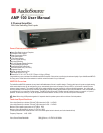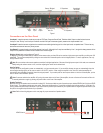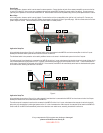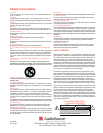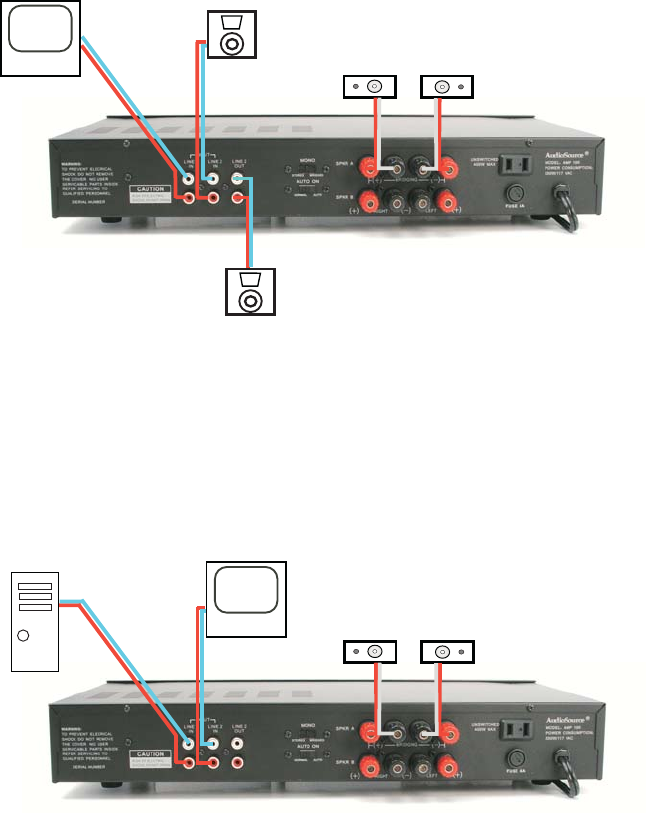
Stereo Setup
In this configuration, the mono switch is set to stereo for stereo operation. Connect the line out jacks from a stereo preamplifier or source to the line
in jacks of your Amp100. Next connect your speakers to the terminals marked SPKR A (observing proper polarity: see above). Connect a second
(optional) pair of speakers to the terminals marked SPKR B. Select between the A and/or B speakers using the front panel speaker selection buttons.
Mono Setup
In this configuration, the mono switch is set to bridged. Connect the line out from a preamplifier to the right line in of your Amp100. Connect your
mono speaker to the terminals of your Amp100, following the example in the diagram in figure 2 (previous page). Use the volume control on the front
panel to adjust the volume. Leave the balance set to the center detent or normal position.
If any components of this system are missing or damaged
please call AudioSource directly at:
1.800.HELP.115
Application Setup One
In the application shown above in figure 3, a distributed audio system is connected to the AMP100 as a local zone amplifier via the Line 2 inputs.
Normally the distributed audio system will be the audio source for the AMP100.
The distributed audio is then passed on to be used by additional zones or sub zones in the distributed system via the Line 2 outputs.
The Audio output of a local television is connected to the AMP100 via the Line 1 inputs, and whenever the television is active its signal will take priority
over the distributed audio signal present at Line 2. However, the distributed audio signal will still be present at Line 2 Out. In this circumstance the
audio output of the television will be heard via the AMP100. Once turned off, the AMP100 will automatically switch back the distributed audio system
as an audio source, assuming the television is still active.
TELEVISION
Figure 3
Figure 4
Computer
Application Setup Two
In the application shown above in figure 4, the audio output of a local television is connected to the AMP100 as a local source via the Line 2 inputs.
Normally the television will be the audio source for the AMP100.
The audio output of a computers sound card is connected to the AMP100 via the Line 1 inputs, and whenever the computer is active its signal will
take priority over the televisions audio signal present at Line 2. In this circumstance the audio output of the computer will be heard via the AMP100.
Once turned off, the AMP100 will automatically switch to the television as an audio source, assuming the television is still active.
TELEVISION



